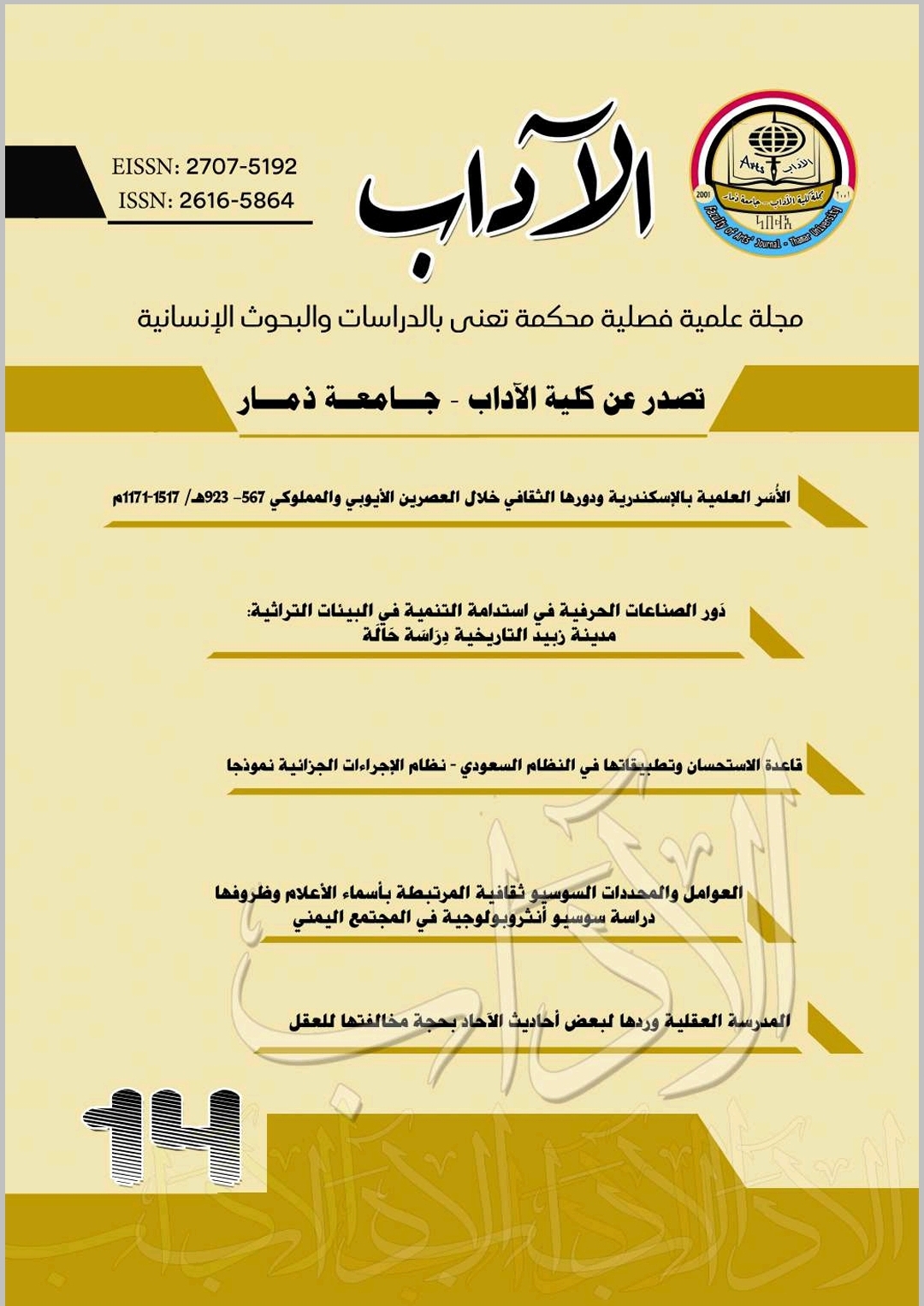The Transformation of Northern Arbitah in the Abbasid Era from Military Bases into Learning Centers Prof. Abdulhakim Abdulhk Mohammed Saifaddin
DOI:
https://doi.org/10.35696/.v1i14.638Keywords:
Arbitah, Military barracks, learning Centers, Scholars, The Abbasid Era, TarsusAbstract
The Arbitah (plural of the Arabic word ribāṭ, which is a small fortification built along a frontier) is one of the manifestations and signs of political, military and educational transformations that the Islamic history witnessed. While it played a military role of an offensive nature in what came to be known as capital cities and thughoor (plural of the Arabic word thaghr, which is a frontier outpost), as has been its role since the beginnings of Islamic history, it turned into defensive sites when the Abbasids took power and changed their strategy from attack to defense. The second Abbasid era witnessed major changes in the structure of these arbitah, as well as in their role and function, especially as far as scholarship is concerned. Scholars settling in these arbitah, whether temporarily or permanently, and the suspension of military confrontations, meant attracting knowledge seekers to these centers. The State, as well as the political power centers in the Muslim world, competed with each other to encourage and promote centers. These arbitah also received the care of the learning endowment and witnessed a lot of scholarly activities. All these factors helped these arbitah turn into centers of learning. This study will try to trace and identify the structural transformations of these arbitah by examining the northern ones facing the Byzantine empire in Levant and Mesopotamia. Compensating military weakness or defeat by turning into the field of learning and knowledge is indeed a unique phenomenon in human history, which is found only in Islamic history. This study will focus on four themes: The concept of arbitah - Tracing the history and justification of arbitah - Arbitah before the Abbasid era: - arbitah during the prophet's lifetime - ArbiTah during the four Caliphs’ rule - arbitah during the Umayyad caliphate - Arbitah during the Abbasid era - Changes in the Abbasid external strategy. ● Suspension of Islamic conquest and building urban centers and thughoors. ● Scholars’ settlement in the thughoor and the start of the change in arbitah's function. ● Scholarly activities in the arbitah (Hadith tradition, jurisprudence, Qur'an recitation styles, other scholarly areas). ● Scholarly institutions in the arbitah (study circles, katateeb (teaching basic literacy skills) and madrasas (Qur'an teaching schools). ● Changing the arbitah into centers of learningDownloads
Downloads
Published
How to Cite
Issue
Section
License
Copyright (c) 2021 عبد الحكيم عبد الحق محمد سيف الدين (مؤلف)

This work is licensed under a Creative Commons Attribution 4.0 International License.
Copyright and Licensing
For all articles published in journal, copyright is retained by the authors. Articles are licensed under an open access Creative Commons CC BY 4.0 license, meaning that anyone may download and read the paper for free. In addition, the article may be reused and quoted provided that the original published version is cited. These conditions allow for maximum use and exposure of the work.



